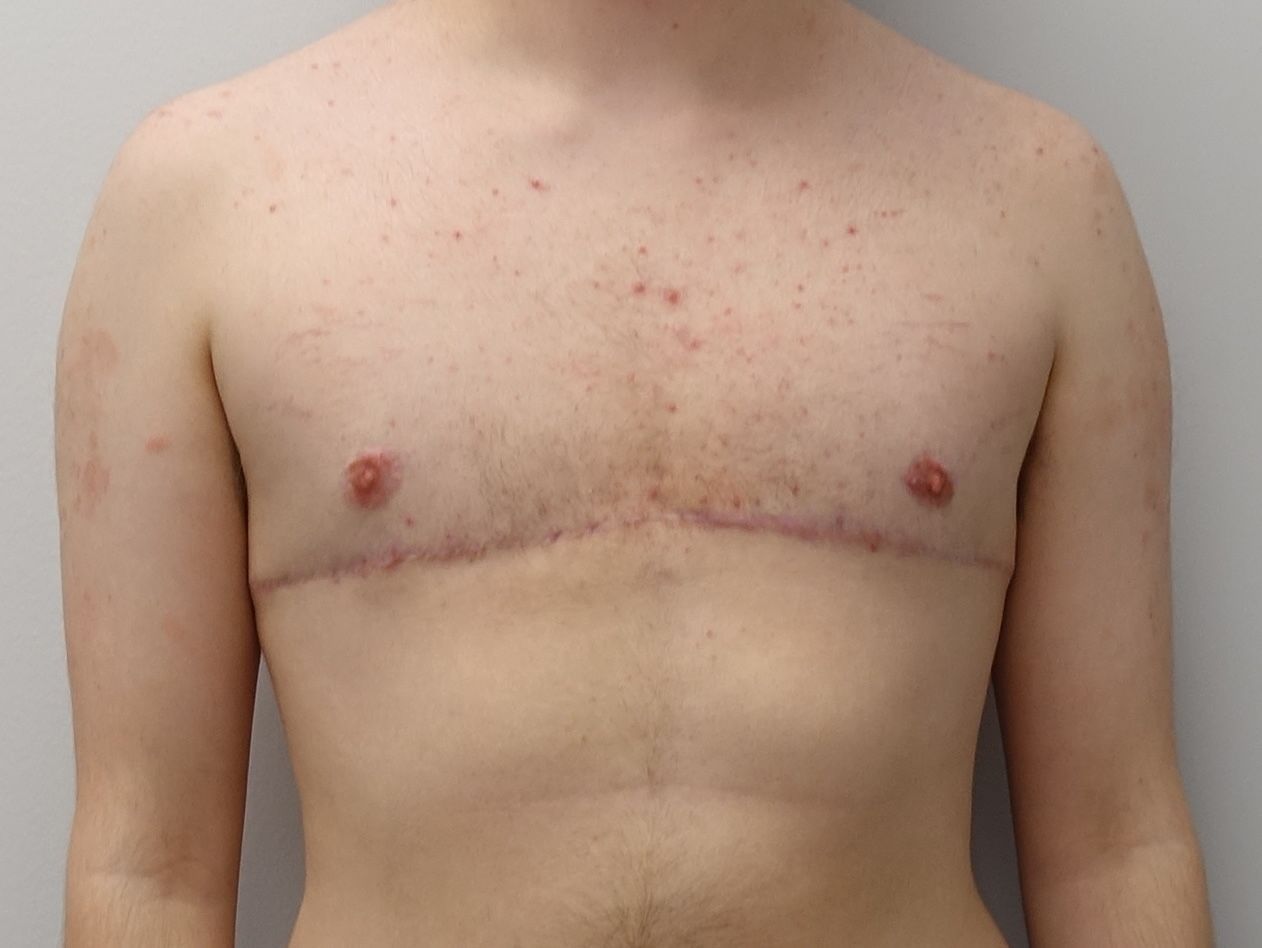How to Care For Nipple Grafts after Top Surgery
How to BEST take care of your free nipple grafts after double incision top surgery

If you had free nipple grafts during your top surgery, caring for them properly in the first few weeks is one of the most important steps in your recovery. The healing process is delicate, and following your care instructions closely will help your grafts heal well, preserve pigmentation, and lower the risk of infection.
The First Week: Keep Dressings Clean and Dry
For the first week, your chest dressings should stay clean and dry. This means sponge baths only—no full showers until your surgeon clears you. The nipple grafts are covered by protective dressings that must not get wet. These are called "bolster dressings" which is usually cotton soaked in mineral oil, wrapped in an antibiotic impregnated dressing and sutured onto the chest over the nipple grafts to stabilize them. This is an important dressing because the grafts need a no-friction environment while they heal initially so blood vessels can align with the graft vessels and grow into the graft (a process called "inosculation").
During this time, it’s also essential to take your prescribed antibiotics as directed to prevent infection, since grafts are more vulnerable in the early stages of healing while they are underneath the bolster dressing. After the dressing comes off for the first time, the antibiotics are no longer necessary.
After Dressings Are Removed (Week 2–3)
Once your surgeon removes the bolsters (the protective nipple dressings), you’ll begin daily dressing changes:
- Apply a moderate amount of bacitracin ointment over each nipple, enough to cover the graft completely.
- Place oil-emulsion gauze directly on the grafts to keep them moist and prevent sticking. This type of gauze is extremely important as it is nonstick and helps to hold in the moisture. The gauze feels oily and is nonstick.
- Add a layer of dry gauze or soft padding over the oil emulsion gauze (anything clean dry and fluffy just for protectio).
- Reapply your compression wrap or post-op compression garment.
- This routine is usually done once or twice per day. In the first two weeks, more moisture is better—your grafts need it to heal.
Week 3 and Beyond: Transition to Moisturizer
By week 3, if your nipples appear fully pink with no yellow areas or scabs, you can discontinue compression and begin gentle moisturizing. Apply a small amount of Aquaphor once or twice daily—just enough to rub in, not a thick layer. A Band-Aid over the nipples is optional and can help hold in moisture during the first week of this transition. Around week 4, once all scabs or openings are gone, switch from ointments to a light lotion, which is better for long-term use since it allows the skin to breathe. Continue to monitor closely: if the nipples look dry, increase moisturizing; if they appear greasy or develop pimples, reduce it. Over the next 3–9 months, gradually taper back until only occasional moisturizing is needed.
Long-Term Care
Over the next several months, your grafts will continue to mature and soften. Light daily moisturizing may be all they need. Protect the area with sunscreen (SPF 50+) once healed, and follow your surgeon’s advice on scar care and massage starting around 4–5 weeks post-op.
Final Thoughts
Every patient heals differently, so these guidelines may be adjusted based on your surgeon’s recommendations. If you notice unusual redness, drainage, or increasing pain, call your surgical team right away. With consistent care and patience, your free nipple grafts will heal well and become a natural part of your chest.




